Kwan Im Thong Hood Cho Temple
Kwan Im Thong Hood Cho Temple is one of the oldest – and arguably one of the most popular – Buddhist temples in Singapore among both locals and tourists alike. You might have seen the name before in news headlines, as the temple often garners crowds numbering in the hundreds during its peak period of Chinese New Year.
Whether you’re a devotee or curious visitor to the temple, here’s what you can expect when you get there:
Table of Contents
Regal architecture from $5 million reconstruction
The temple was founded in 1884 by a traditional Chinese medicine practitioner, and construction of the humble structure was made possible when a local business donated a plot of land as well as an undeclared sum of money.
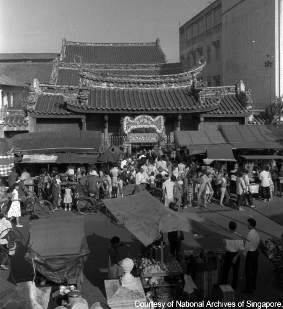
Image credit: Roots
According to inscriptions on temple grounds, this generous donation was made with the goal of establishing a temple “to serve the benevolent men and women”. Like many Hindu temples in Singapore, Kwan Im Thong Hood Cho Temple served as a site of refuge throughout the Japanese occupation of Singapore, lasting from 1942-1945.

Image credit: Choo Yut Shing via Flickr
What you see today is actually the result of a $5 million reconstruction in 1982, where the temple almost doubled in size and was subsequently dubbed by the National Heritage Board as a historic site.
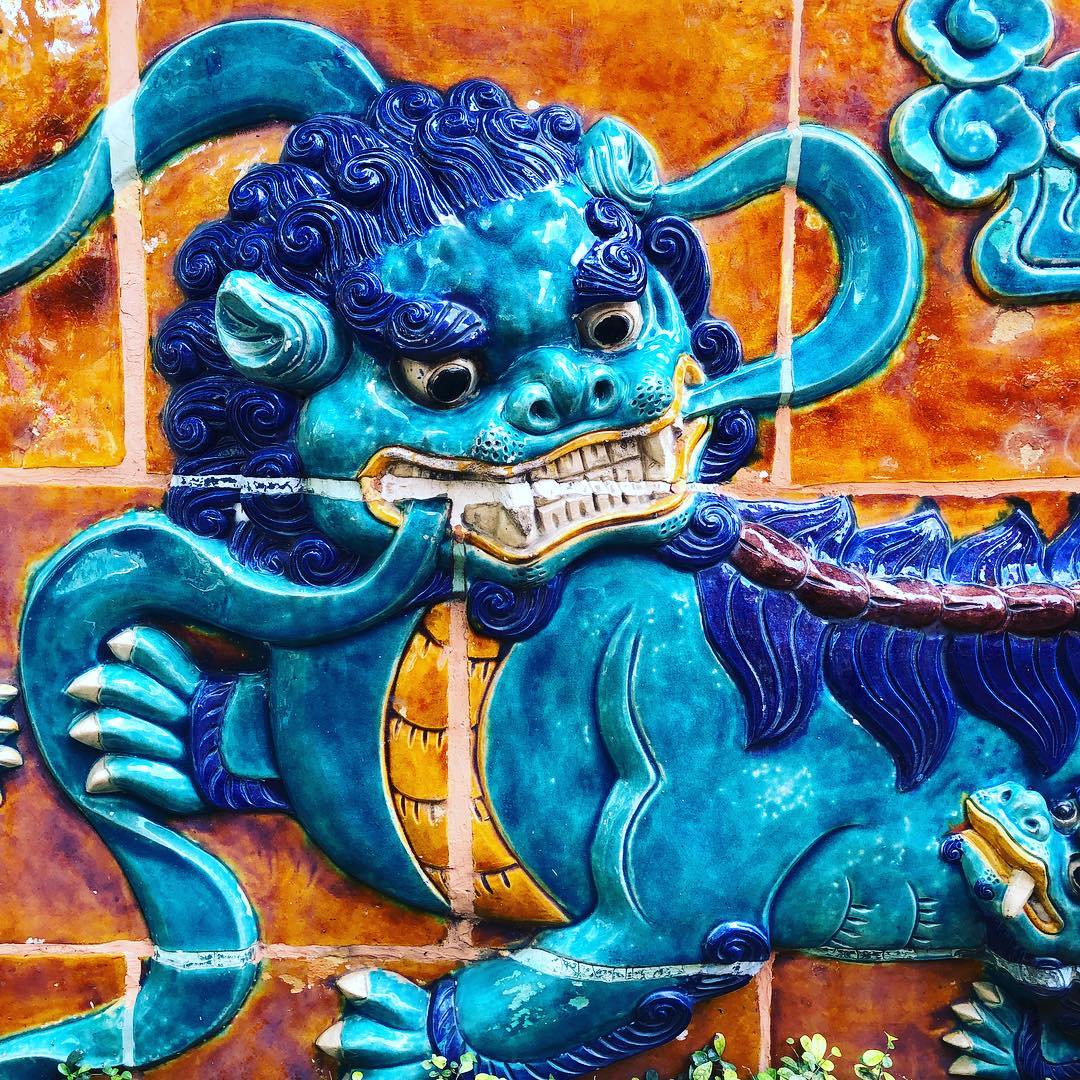
Close-up of one of the temple’s many 3-dimensional carvings.
Image credit: @katjuschakat via Instagram
Its colourful and elaborate facade is characteristic of the Chinese temple architectural style that was popular in the late 19th century; think grand pagoda rooftops and ornate carvings depicting motifs like dragons, phoenixes, and water lilies.
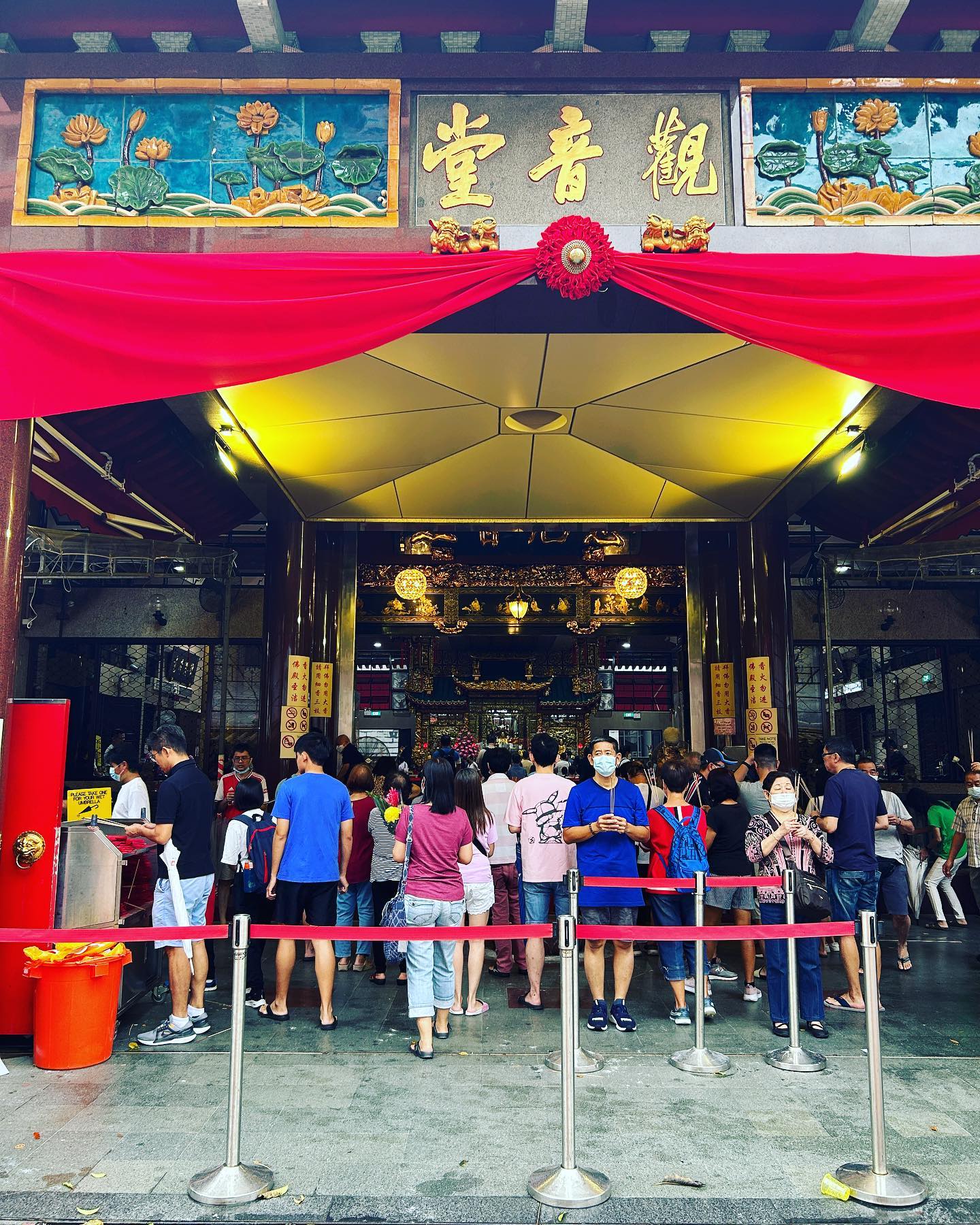
The temple courtyard.
Image credit: @joa_yixuan_nne via Instagram
There’s a spacious courtyard for visitors to pray to the Tian Gong, who – in Buddhism mythology – is Buddhism’s Jade Emperor and Father of Heaven. The outdoor area is juxtaposed by an interior chamber where the deity statues sit.
Blessings from the Goddess of Mercy & other deities
As the name alludes to, Kwan Im Thong Hood Cho Temple is dedicated to the worship of Kwan Im – or Guan Yin, depending on the dialect – AKA the Goddess of Mercy. A key figure in both Buddhism and Taoism, the Goddess of Mercy is revered as an all-seeing and all-hearing deity, and the embodiment of compassion.
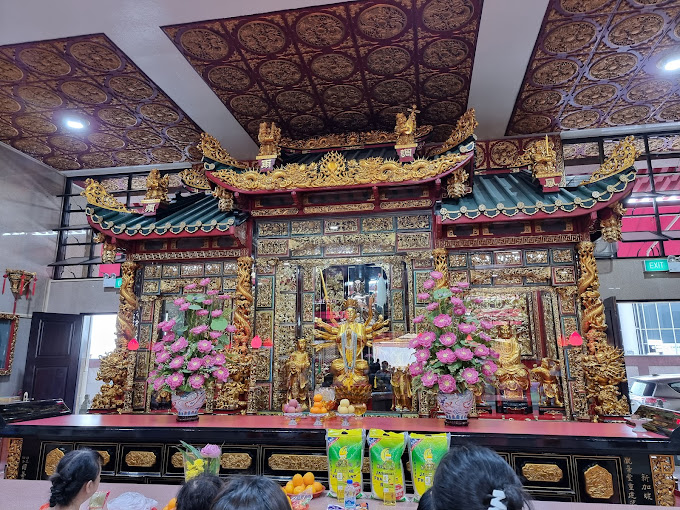
Image credit: Supanut Promrungruang via Google Maps
Praying to Kwan Im is said to bring inner peace and a tranquil heart, so it’s not uncommon for folks to come by the temple in times of great turmoil. Even when things are smooth-sailing, devotees pray to Kwan Im for blessings of continued health and harmony.
Other religious statues include the Sakyamuni Buddha – who people pray to for wisdom and enlightenment, Bodhidharma – a Buddhist monk who represents zen and clarity, and Hua Tuo, a Chinese physician and patron saint of medicine, who is said to bless devotees with good health.
Part of a multi-religious “cross-worship” network
Kwan Im Thong Hood Cho Temple is part of a unique multi-religious network that is no doubt a testament to Singapore’s renowned multi-cultural harmony. Its location grants visitors the ability to embark on a “cross-worship” journey, in a multi-destination prayer itinerary of sorts.
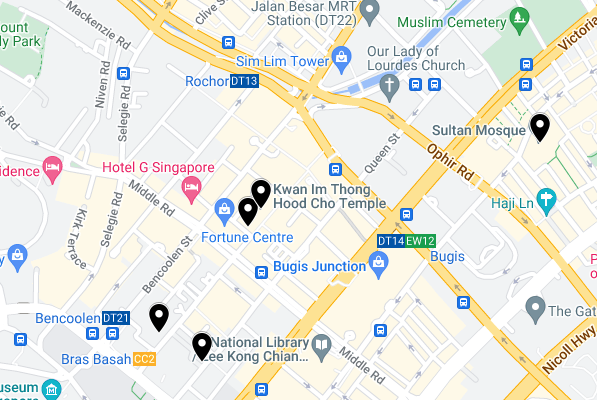
The proximity between 5 different places of worship, indicated by black markers.
Image adapted from: Google Maps
Other sites of worship situated just down the street include Sri Krishnan Temple, the Church of Saints Peter & Paul, and Maghain Aboth – the oldest and largest Jewish synagogue in all of Southeast Asia. Also, a stone’s throw away within the Bugis district is Sultan Mosque, an iconic landmark for the Muslim community that’s close to 200 years old.
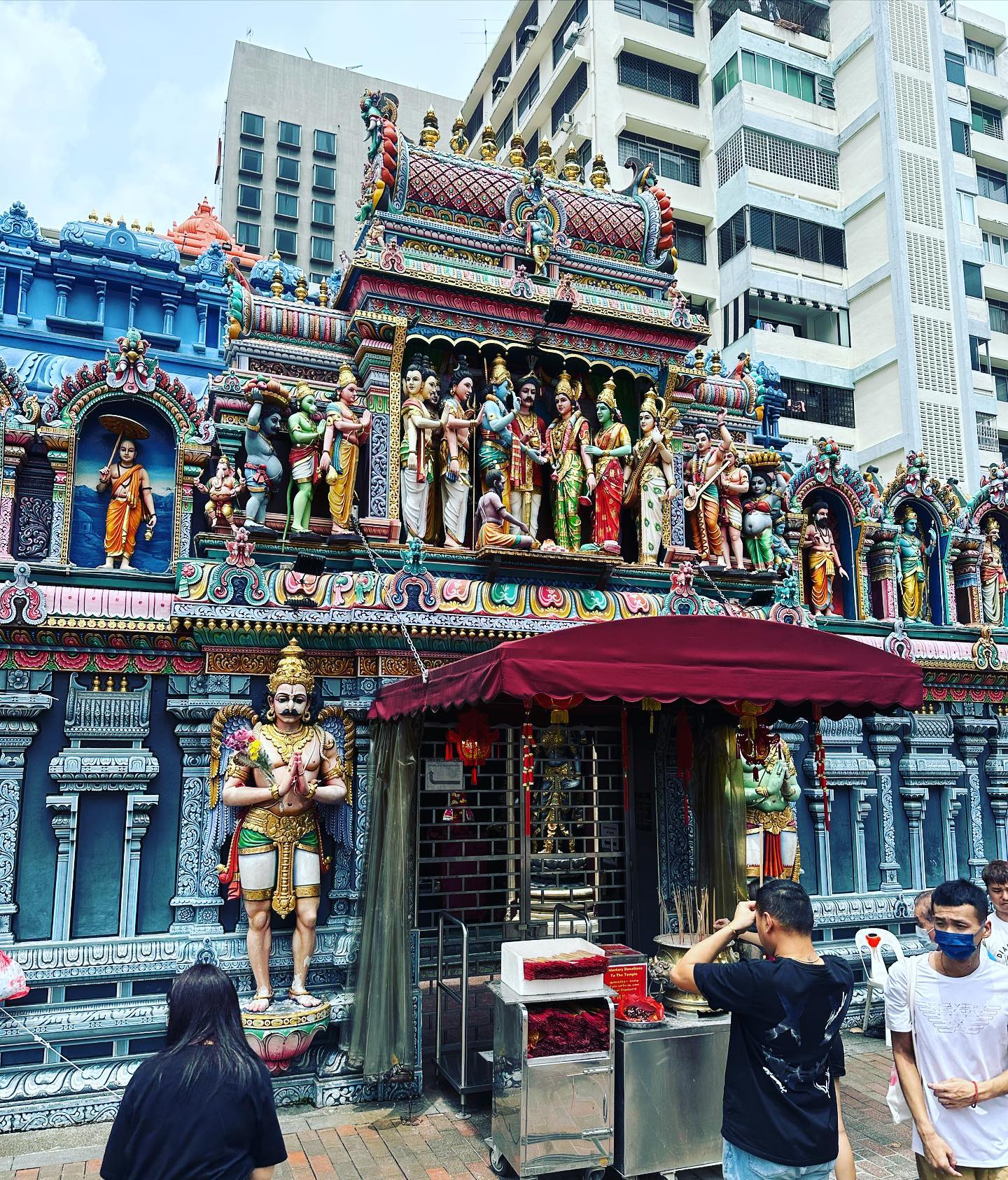
Image credit: @pa111str
In recognition of the high volume of non-Hindu visitors who come by from Kwan Im Thong Hood Cho Temple, the Sri Krishnan Temple even placed a Kwan Im statue within their compounds and created a designated area for Chinese devotees to burn joss sticks.
It’s safe to say that if you’d like to immerse in as many cultural hotspots from Singapore’s varying ethnic groups in 1 day, Waterloo Street is a prime starting point.
How to get to Kwan Im Thong Hood Cho Temple
- By MRT: colloquially known as “Bugis temple”, Kwan Im Thong Hood Cho Temple is, to no one’s surprise, closest to Bugis and Rochor MRT stations. Both are about a 7-min walk away.
- By bus: the two closest bus stops are Ibis S’Pore On Bencoolen and Opp Nafa Campus 3, which are served by buses 64,65, and 139; and 56, 131, 147, 166, 857, and 980 respectively.
- By car: those who are driving can consider parking an The Bencoolen, Fortune Centre, or Fu Lu Shou Complex.
Visit the Kwan Im Thong Hood Cho Temple at Bugis
The temple is open to all visitors, no matter your religious background, so feel free to swing by to pray for blessings, health, wealth, and happiness. Admission is free, and you may opt to drop donations at the front of the altars to help with the temple’s upkeep. Don’t worry about having to dip too far into your pockets, even a token sum of $2 would be much appreciated.
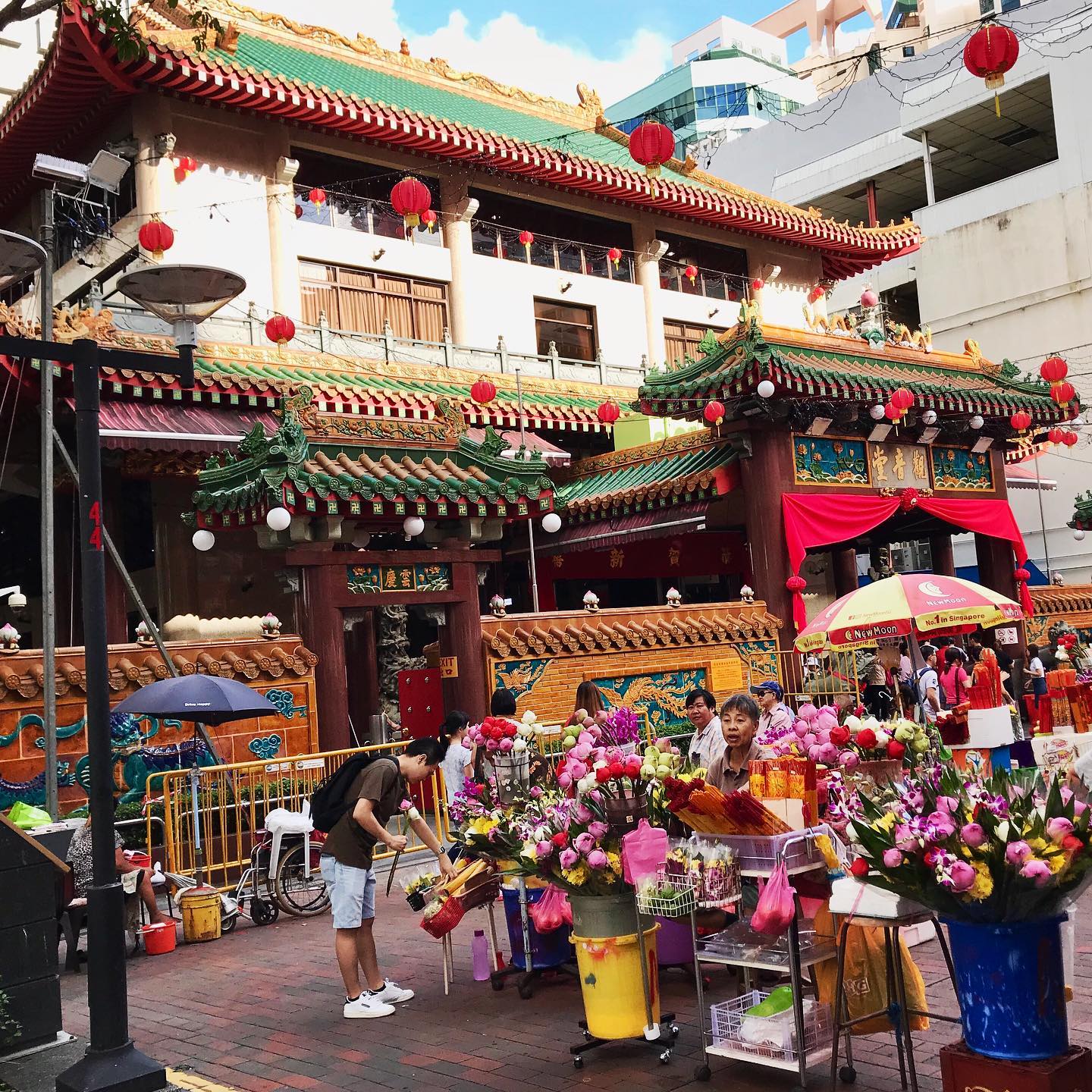
Image credit: @mandarin_org via Instagram
There are also a bunch of flower vendors who set up shop near the vicinity of the temple, should you want to purchase a flower offering from $2 per stalk of lotus flower or $5 for a simple bouquet.
Tip: If you’d prefer more guidance and insight into Chinese temple culture, you can join a Lucky Temple Tour which will also take you to other noteworthy temples in Singapore such as Loyang Tua Pek Gong and Koo Chye Sheng Hong Temple.
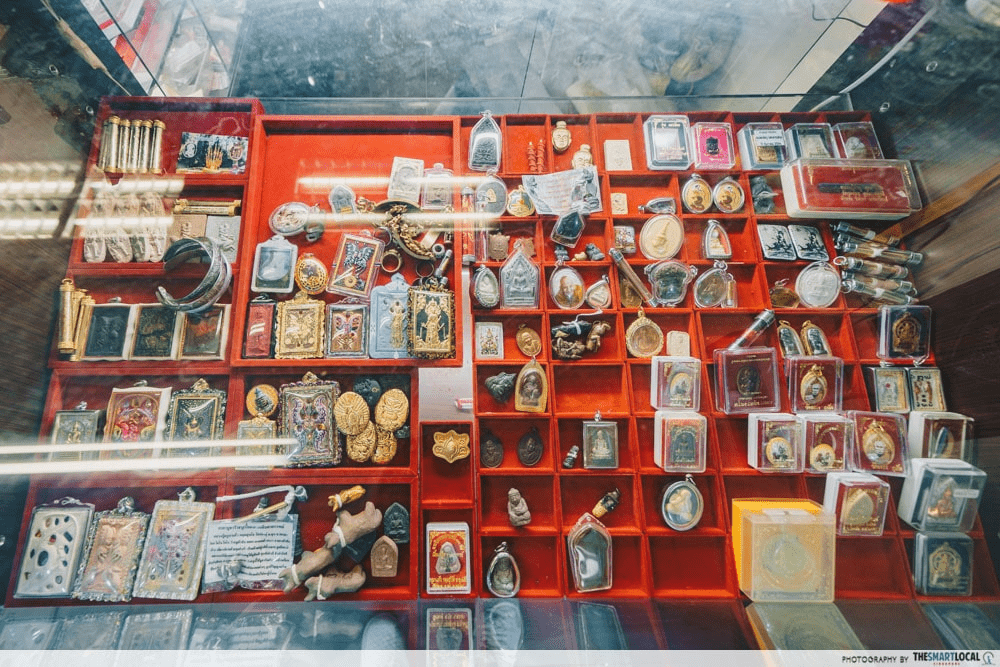
Buddhist amulets sold at Fu Lu Shou Complex.
A short walk away from Kwan Im Thong Hood Cho Temple is Fortune Centre, where you can fuel up on some vegetarian or vegan grub. Thereafter, head to the nearby Fu Lu Shou Complex where you can further boost your luck and auspiciousness at stores that sell blessed ornaments and meditation gear, or even get a Ba Zi Chinese astrology reading done.
More guides on cultural sites in Singapore:
- Hell’s Museum at Haw Par Villa
- Yueh Hai Ching Temple – “Temple Of Love”
- Keramat Bukit Kasita – Ancient royal shrine
- Sri Mariamman – Oldest Hindu Temple in SG
Cover image adapted from: Choo Yut Shing via Flickr, @katjuschakat via Instagram
Last updated by Shannon Lee on 13th September 2024.
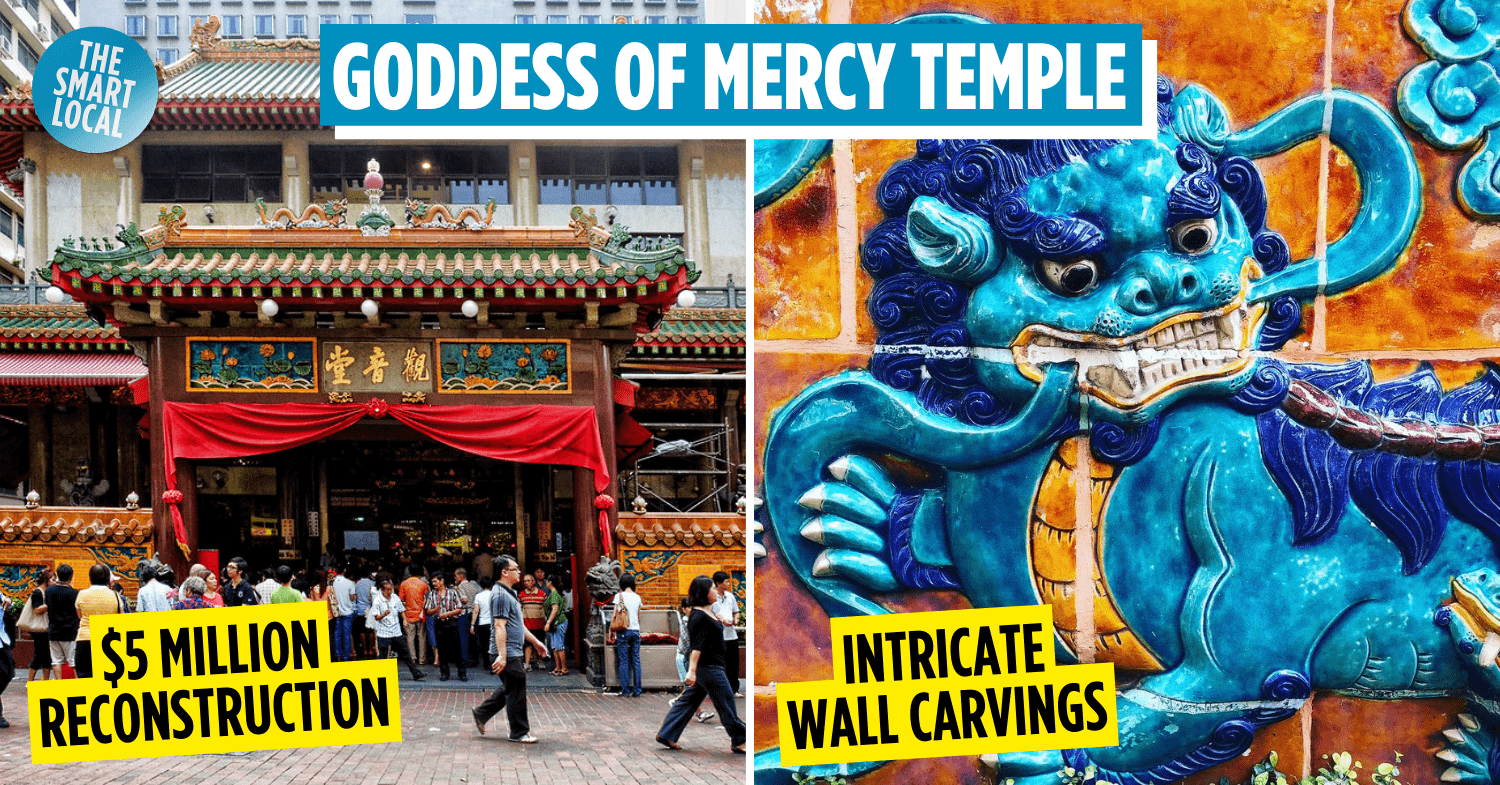
 Sign Up with TSL Connect
Sign Up with TSL Connect